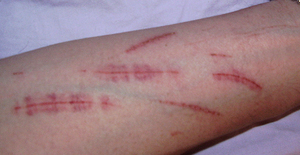For homeowners during the warmer months their outside hoses are a treat, they can wash cars, fill pools, water gardens, and even soak screaming children. As the weather turns colder we ignore our hoses, leaving them idle and unthought of, like a forgotten stuffed animal.
Well in areas that are prone to freezing temperatures, that teddy bear will come back to attack. When a water line freezes and bursts, the effect may not be seen for some time, until the line thaws. Then the water will quickly flood any and all adjacent areas, usually people are not aware because many hose lines are in garages, basements and other seldom used areas.
So to keep the teddy bear at bay, the old “an ounce of prevention is worth a pound of cure” holds true.
As the weather cools and the hoses are not being used everyone should take a day to get all of their mechanical systems ready for winter. One of the most overlooked is simply shutting and emptying our hose lines.
I had gotten into the habit of not shutting the front hose in my house, the teddy bear didn’t scare me. Well, the end of last winter I was in my crawl space looking for something and I heard a hissing noise. After some tracing I found that the water line had froze and burst, but the water was not evident, it was leaking into the cinder block foundation wall, and we had not had freezing temperatures for several weeks. So I had several weeks worth of water in my foundation, not good. Bad teddy bear got me, I have learned to follow my own advice
First you should locate all of your outside hoses, and this means any that are in unheated areas, such as garages and enclosed porches. In a perfect world there should be a shut-off valve that controls only that line, and this valve should be located in a heated part of the structure. As a professional plumber I have found shut-offs located in a spot that will freeze just as quickly as the hose bib.
If the shut-off is located in bad spot or if there isn’t even a shut-off then call a local, reliable plumber to have one installed. The cost of installing a new valve is small compared to drying out a basement.
Don’t think your job is done. After shutting the valve off, go outside and open the hose bib, this serves two purposes. First you want to empty all the water out of the exposed line, when a line freezes the water expands as it freezes, this is what causes the line to burst. Always leave the outside valve open for the winter, giving any remaining water room to expand.
Second, you want to be sure the shut-off inside actually shuts 100%. Many times I have seen someone go through these steps, but not notice the valve leaks water. As the water continues to pass through the shut-off it will freeze and also burst. Once again call a trusted plumber to replace the shut-off valve.
Some hose bibs have no where to install an inside shut-off, so you will need to insulate the outside valve as well as possible. The home centers and hardware stores sell items for this, one is a styrofoam cap that can be placed over the outside bib. In a pinch some loose fiberglass insulation can be wrapped around the bib, be sure to seal off all holes where cold air can enter.
Some properties have what are called frost free hydrants, or frost free hose bibs. They are basically a one piece unit that has a long stem on the inside for the washer. Since the stem is longer, the valve is shutting off inside the building, no need to have a separate shut-off. The problem with these is that people forget to check them and they leak, which will cause them to burst. Also the longer stem is prone to breaking after so many years, which becomes a maintenance issue.
Moral of the story is that if you follow these few steps you will save yourself money and headaches.




